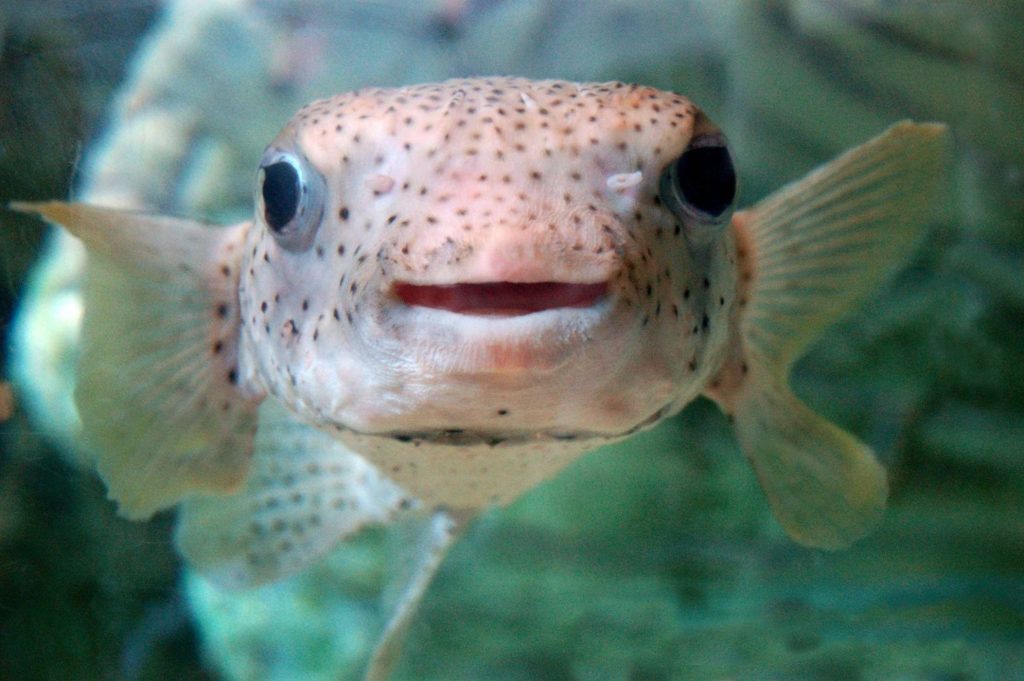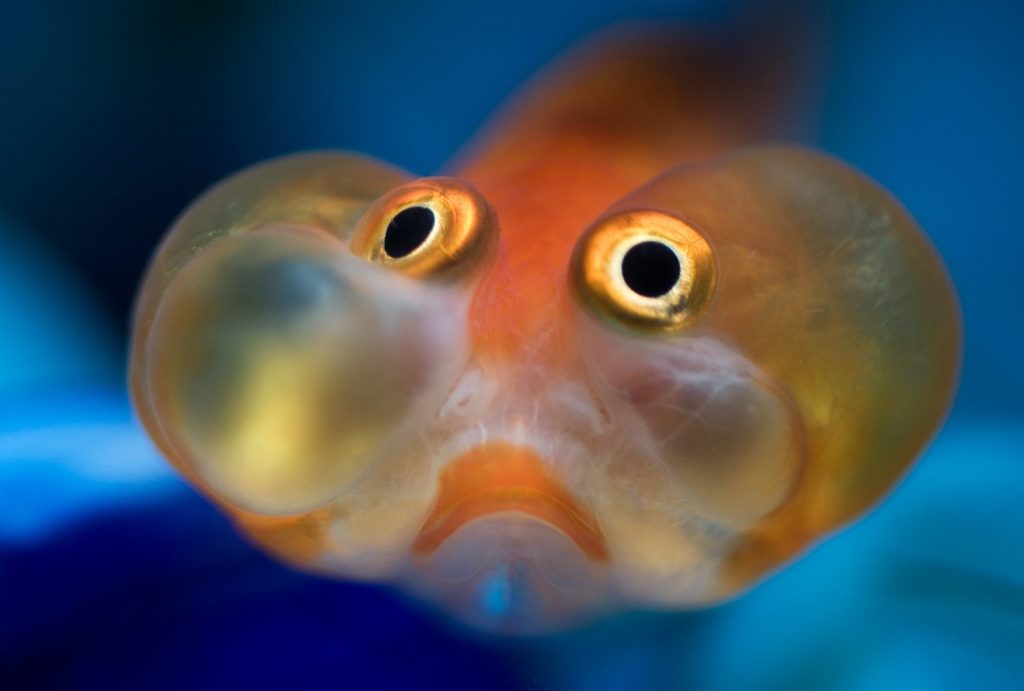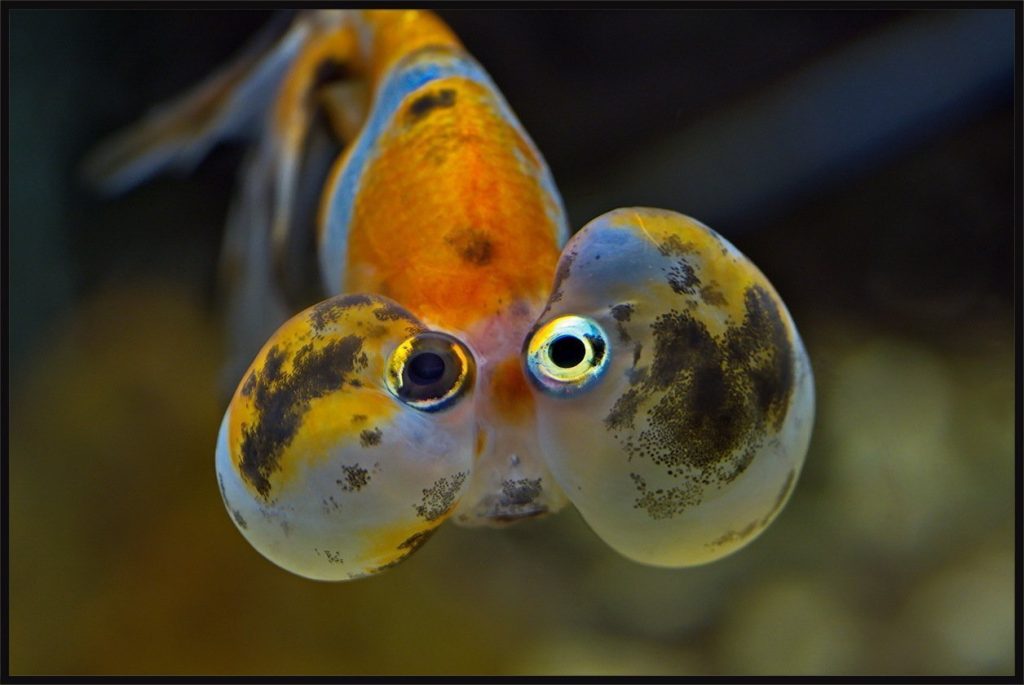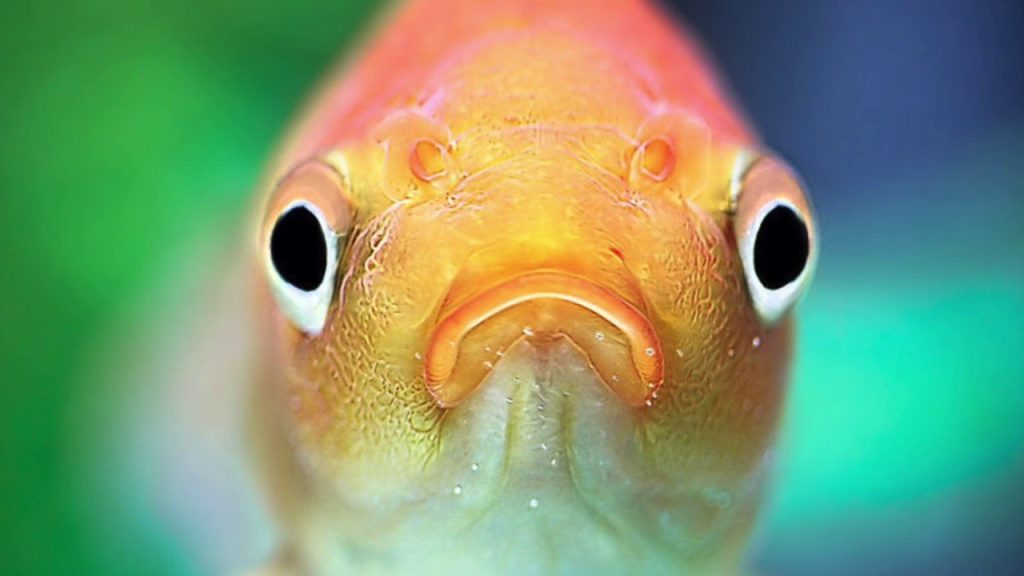When it comes to the underwater kingdom, the world of dorky fish remains largely unexplored and unfamiliar to many. With their quirky features and unique behaviors, these fish certainly add a touch of eccentricity to oceanic life. This article has been dedicated to shedding light on these often overlooked dwellers of the deep sea. Let’s dive in to unravel the mystery surrounding them!
The term “Dorky Fish” may sound amusing, but it actually represents a group of fish species that are appreciated for their peculiar and outlandish characteristics, often overlooked by casual observers. These fish, with their weird body structures or unconventional survival tactics, can indeed look ‘dorky’ to us, yet they play critical roles in maintaining balance in the marine ecosystem.
Join us as we explore these intriguing underwater oddballs, learn about their lifestyle and adaptations, and appreciate how these seemingly ‘dorky’ creatures exhibit incredible strategies for survival in the often harsh and competitive marine environment.
Discovering the Charm of Dorky Fish

When one thinks of water-dwelling creatures, the first that spring to mind are often the elegant, the powerful, or the colorful. Yet, nature is a portfolio of diversity, and some of the most fascinating species of fish aren’t those that conform to conventional standards of beauty. Enter the world of dorky fish, a collection of species that might not win a beauty contest but would certainly take the crown in a competition of character and charm.
Physical Characteristics
Dorky fish, as one might surmise from the name, aren’t renowned for their striking features. These fish often have disproportionately large heads, wide goggle-like eyes, unusually shaped bodies, and skin that lacks the gleaming scales typical in popular fish species. Yet it’s precisely these quirky traits that level up their charm.
- The Blobfish, for instance, has a jelly-like skin that aids in buoyancy.
- The Goblin Shark’s protrusible jaws can dramatically extend to catch prey.
- The sarcastic fringehead can remarkably widen its mouth, showcasing an array of colors.
Behavioral Traits
These unusual physical traits are often accompanied by equally intriguing behavior. The dorky fish are notorious for their eccentric but endearing habits.
- The batfish, despite being a fish, prefers to walk on the seabed rather than swimming.
- The stonefish, masters of camouflage, can hide themselves as a rock to ambush their prey.
- The fangtooth fish, despite their terrifying appearance, are weak swimmers and rely on their oversized mouth to catch small fish that swim nearby.
In a world that often celebrates the sleek and the beautiful, dorky fish offer a refreshing contrast. Their unique appearances and behaviors serve as a reminder of the incredible diversity and adaptability of life on Earth. Their charm is in their dorkiness, showing us that even in nature, it’s okay to be a little different.
Important Characteristics of Dorky Fish
Dorky Fish, oftentimes overlooked due to their unusual appearance, have a number of unique characteristics that make them a fascinating group of species. Here are some of the defining factors that make Dorky Fish truly remarkable:
Diversity: The term ‘Dorky Fish’ is not used to describe a specific species, rather it is used to refer to a diverse group of fish that are known for their odd or comical appearances. The incredible diversity within this group signifies a vast range of shapes, sizes, and colors all embodying the essence of what is usually described as ‘dorky’.
Adaptability: Many varieties of Dorky Fish have adapted well to a wide range of environments. Some live in the dark abysses of the deep seas, while others inhabit shallow freshwater ecosystems. This demonstrates not only their hardiness but also their versatility.
Unorthodox Appearance: What makes it stand out the most is undoubtedly their looks. From bulbous protruding eyes, oversized mouths, awkwardly placed fins, elongated bodies, to brightly colored or even transparent skin, Dorky Fish defy the conventional ‘rules’ of fish forms.
Behaviour: Many Dorky Fish also display peculiar behaviors. For example, some species show unique feeding habits such as vacuuming up detritus or combing through sand for hidden morsels. Others employ unusual locomotion methods like walking on seabed with specialized fins or contorting their awkward bodies to move around.
Above all, one important thing to remember about “Dorky”, despite their eccentric appearances and behaviors, is that they exhibit a fantastic example of biological diversity and evolution. Their distinctive looks are perfect adaptations to their particular environments and lifestyle. Yet, they often remind us that nature has a sense of humor, too.
Understanding the Dorky Fish Habitat

It also known as Clown Fish, are vibrant and captivating creatures with a habitat that is nothing short of unique. The natural habitat of these amusing fish species extends to the warm waters of the Indian and Pacific Oceans, including the Red Sea. However, they are particularly endemic to the coral reefs and reside among sea anemone for protection and sustenance.
Here’s a table breakdown of some common types of Dorky Fish and their typical habitats:
| Type of Dorky Fish | Typical Habitat |
|---|---|
| Orange Clownfish | Indo-Pacific Oceans, reefs among sea anemone |
| Skunk Clownfish | Western Pacific Ocean, shallow lagoons and reefs |
| Pink Anemonefish | Western Pacific Ocean, sandy bottoms and reefs |
| Saddleback Clownfish | Western Pacific Ocean, among the tables and branches of corals |
The symbiotic relationship between the dorky fish and anemones is one of the fascinating aspects of their existence. The stinging tentacles of anemones provide a safe haven for Dorky Fish against potential predators. On the other hand, the Dorky Fish carry out the task of cleaning the anemones by eating up the left-over food and parasites – a perfect example of mutual benefit in the aquatic world.
Despite this, climate change and human activities are posing a significant threat to the habitats of these Dorky Fish. Conservation actions are therefore vital to protect these wonderfully peculiar species and their equally precious habitats.
The Eye-catching Colors of Dorky Fish
One of the most fascinating and striking features of the “dorky” is their coloration. They are known for their vibrant and expansive range of colors that not only enhance their attractiveness but also serve essential functions in their survival and reproduction.
Distinct Colors and Patterns
Dorky fish display a variety of color patterns and hues ranging from bold reds, blues, and yellows to more subtle shades of greens, grays, and browns. This striking array of colors is typically a result of various pigments found in their skin cells.
These colors aren’t just for show; they serve critical roles in the fish’s daily life. Let’s delve further into the reasons behind the dorky fish’s vibrant colors:
- Camouflage: Like many sea creatures, dorky fish use their colors for camouflage. The colors of their environment often inspire these shades, helping them blend in to avoid predators.
- Courtship display: Male dorky fish often showcase brighter colors during mating season to attract females. These vibrant displays are a crucial part of their reproductive success.
- Territorial display: Bright colors can also be a sign of aggression, signaling to other male fish to keep their distance. This use of color helps establish and maintain territories within their habitat.
Color Changes in Dorky Fish
Another fascinating aspect of the dorky fish’s colors is their ability to change. Some species can adjust their hues based on their mood, environmental factors, or the need for additional protection or courtship displays.
- For example, when a dorky fish feels threatened, it may adopt dull colors to blend in with its surroundings better.
- On the other hand, when trying to attract a mate, it may display brighter and more vibrant colors.
- Some dorky fish can even mimic the colors of other species as a form of protection or when intruding on another fish’s territory.
In conclusion, the colors of dorky fish are not only visually captivating but also provide intriguing insights into their behavior and survival strategies. These remarkable creatures truly are a testament to the wonder and beauty of aquatic life.
Feeding Habits and Diet of Dorky Fish

The Dorky Fish, despite its humorous name, has a diverse and interesting diet which is far from dorky at all. The following sections will delve deeper into what it is that these unique creatures keep on their meal plates.
The Core Diet
The diet of the Dorky Fish commonly consists of small, soft-bodied invertebrates. This includes, but is not limited to, worms, crustaceans, and various larval insects. These dietary features are mostly due to the fact that the Dorky Fish, in general, does not possess a strong set of teeth for crushing hard-bodied organisms. Therefore, they tend to hunt for softer and easily accessible prey.
Feeding Habits
The Dorky Fish is known for its opportunistic feeding habits. These fish are not very particular and will eat whatever is available in their natural habitat. They have a voracious appetite and eat in bursts when food is abundant. Their active hunting periods are generally around dawn and dusk, making them crepuscular feeders.
A fascinating fact about these dorky fish is that they are also known to showcase omnivorous traits when required, occasionally dining on algae and other aquatic plants. This diverse and adaptable diet allows them to thrive in a variety of ecological situations.
In conclusion, despite their unique and sometimes comedic appearances, the dietary habits of Dorky Fish are a true spectacle of adaptability and survival. These creatures are undeniably a fascinating topic for anyone interested in aquatic life.
Unique Behaviors Exhibited by Dorky Fish
When we dive beneath the surface of the ocean, we find a world full of fascinating creatures with unique behaviors. Dorky fish, despite their unusual name, are no exception to this rule. As a small, quirky looking fish species, they exhibit a range of behaviors that fascinate marine biologists and fish enthusiasts worldwide.
Color Changing Ability
The most observable characteristic of dorky fish is their ability to change color. Similar to chameleons, they are capable of modifying their body color and pattern to match their surroundings. This protective camouflage keeps them safe from predators and enables them to sneak up on their prey without being noticed.
Breeding Rituals
Dorky fish have an unusual mating ritual that is a spectacle in itself. When a male dorky fish is ready to mate, it will find an open area on the seabed and begin a beautifully intricate dance, often involving complex spins and twists. This performance, coupled with a dramatic change in body color, is intended to attract a female partner.
In addition, it’s worth mentioning that dorky fish are incredibly social creatures. They are known to form large aggregations and engage in collective behaviors such as synchronized swimming. This collaboration not only protects them from potential predators but also aids in foraging for food.
In conclusion, dorky fish may not command the same awe as more massive marine species, but their unique behaviors certainly make them one of the more interesting fish within the deep blue sea.
The Fascinating Life Cycle of a Dorky Fish
Understanding the life of a Dorky fish is like following a sequence of amazing transformations. Let’s take a closer look at this interesting fish and its unique life cycle.
Egg Stage
The life of a Dorky fish begins as an egg. Unlike many other fish species that lay hundreds of eggs, a Dorky fish typically lays only a few dozen. The eggs are carefully protected in a nest made by the male Dorky fish.
Larvae Stage
- Once the eggs hatch, the baby Dorky fish, also known as larva, begins its life in water. This is a crucial stage in their life where they are vulnerable to predators.
- The larvae are not capable of swimming due to lack of developed fins, hence they spend most of the time hiding in the seafloor’s sand and surviving on the nutrients from the egg yolk.
Juvenile Stage
As the Dorky fish larvae grow, they enter the juvenile stage. With their fins fully developed, they now learn to swim and hunt for food, preparing themselves for the adult stage. During this phase, they migrate to the brackish waters where salinity level is moderate.
Adult Stage
Upon reaching adulthood, the Dorky fish migrate back to freshwater. They breathe through a highly developed lung-like organ that allows them to live in oxygen-deprived water, which is typically inhospitable for other species of fish.
Reproduction
When the adult Dorky fish are ready to reproduce, they travel upstream to lay their eggs, starting the cycle all over again. The lifespan of a Dorky fish can run up to five years.
Fascinating, isn’t it? The life cycle of a Dorky fish is an incredible journey of transformation and adaptation, demonstrating the remarkable ways of nature’s creatures.
Protection Measures for Endangered Dorky Fish
It, despite its humorous name, face significant threats in their natural habitat that are reducing their population numbers drastically. Thankfully, various protection measures are being implemented to shield these misunderstood and vulnerable creatures from further harm.
Fishing Restrictions

One of the dominant threats to the “Dorky” populations is overfishing. Many local and international laws have been enacted that seek to control fishing on specified times of the year or entirely ban the fishery of these species.
- Establishment of catch limits
- Use of specific fishing gear that reduces bycatch
- Installation of minimum size limits to ensure juveniles are not harvested
Creating Protected Habitats
Another effective way to protect the “Dorky” is by defining and managing protected habitats. This measure not only shields them from human activities but also provides them with a safe space where they can reproduce and grow their populations.
- Setting up protected ocean spaces or marine reserves
- Protecting their breeding sites
- Implementation of laws that restrict human activities in these areas
Research and Data Collection
Conservation measures rely heavily on scientific research and gathering accurate data about the Dorky Fish populations. Through consistent monitoring, researchers can identify population trends, understand threats and then develop effective strategies to counter these threats.
- Regular population surveys
- Data collection on the fish’s habitat and breeding patterns
- Studying the effect of climate change on the “Dorky” population
Education and Public Awareness
Finally, sparking public interest and knowledge about the Dorky Fish can do wonders for their protection. Informed citizens are more likely to contribute positively towards the conservation and recovery efforts of the fish populations.
How Dorky Fish Impact Their Ecosystem
The aquatic ecosystem is profoundly influenced by Dorky fish. These unique and odd-looking species of fish play a crucial role in balancing the overall ecosystem. They undertake some quirky behaviors and have fascinating adaptations that allow them to survive and contribute particularly to aquatic environmental sustainability.
| Dorky Species | Role in Ecosystem |
|---|---|
| Pufferfish | These fish are known for their ability to inflate dramatically when threatened, which can deter predators. They also play a part in controlling the population of their prey. |
| Slender-snouted Crocodile | The crocodile, although not a fish, is essential as an apex predator, keeping other species’ populations in check and removing weak or sick individuals. |
| Anglerfish | Anglerfish are bioluminescent, meaning they generate their own light. This characteristic allows them to attract prey in the dark abyss of the ocean. |
| Clownfish | Famous for their symbiotic relationship with sea anemones, clownfish help lure other fish that the anemone can trap and eat. In return, the anemone offers safety and leftovers to the clownfish. |
| Leafy sea dragon | This unusual creature is a master of camouflage. This behavior helps regulate the predator-prey interactions in the ecosystem, maintaining a healthy balance. |
It not only add color and diversity to our aquatic ecosystems but also play a vital role in maintaining a balanced environment. More research should be done to understand these species better and ensure their conservation for the health and sustainability of our ecosystems.
Impact of Climate Change on Dorky Fish Species
Climate change poses serious threats to various animal species, and the Dorky Fish are no exceptions. As temperature and atmospheric conditions fluctuate, these unique fish face several challenges that might compromise their survival.
Exposure to Increased Temperatures
The rise in average global temperatures, one of the leading indicators of climate change, affects the delicate balance of aquatic ecosystems. For Dorky Fish, who thrive at specific temperature ranges, an increase even by a couple of degrees could potentially disrupt their metabolic rates, growth pattern, and reproduction. Cold water fish species find themselves especially at risk as warmer water holds less oxygen, which is vital for their survival.
Risk of Ocean Acidification
With increasing carbon dioxide (CO2) emissions, a significant amount of CO2 is absorbed by oceans, leading to their acidification. This results in the lowered availability of minerals required by marine organisms to build their shells and skeletons. Although “Dorky” aren’t directly affected by acidity, a decline in invertebrate species could affect their feeding habits and subsequently their population in the long run.
The impact of climate change isn’t isolated to these areas. Changes in sea levels and storm patterns also pose significant threats to their habitats. Continuous monitoring and conservation programs are key in ensuring the survival of “Dorky” amidst the rapidly changing environmental conditions.
FAQ
What is the meaning of the term “Dorky fish”? Why are some fish described that way?
The term “dorky fish” is often used informally or colloquially to describe fish species that might seem strange, odd, or outlandish in comparison to more traditionally sleek and flashy fish species we often think of. This could be due to unusual physical appearances, odd behaviors, or unique adaptations that inhabit a certain niche in their ecosystems. They might look dorky, but these features actually make them specially equipped for their environment.
Can you share some fun facts about these “Dorky fish”?
Of course! One example is the blobfish, made famous by viral internet images, which has a gelatinous body that floats just above the sea floor, requiring very little energy to move. Another fun example is the mudskipper, a fish that can use its pectoral fins to walk on land, and breathes through its skin, throat, and mouth lining when out of water!
Why should we study these ‘Dorky fish’?
While some might see these fish as just “dorky”, studying them can provide valuable insights to science. For example, their unique adaptations can tell us a lot about the environments they inhabit, and how they’ve evolved over time. Furthermore, these adaptations can also inspire new innovations in technology or engineering, such as robots inspired by the walking style of mudskippers. So, not only are these ‘dorky interesting, they’re also scientifically significant.
What is the most unique adaptation you’ve come across in your study of ‘Dorky fish’?
The most unique adaptation I’ve come across has to be that of the Pacific barreleye fish. This fish has a transparent head, allowing it to look upwards through its skull to spot potential prey! This incredible, unusual adaptation allows the barreleye to see its food in the dim light of its deep-sea home. It’s a perfect example of how these ‘dorky’ are often far more complex and fascinating than they may first appear.
Have any new ‘Dorky fish’ species been discovered recently?
Yes, new species of fish, including those that might fall into the ‘dorky’ category, are being discovered all the time. For instance, a new species of ghost shark, which has a bizarre, retractable sex organ on its forehead, was discovered just a few years ago. Researchers believe this strange feature is used during mating. This once again highlights the endless diversity and fascinating adaptations in the underwater world!
What are some fun facts about dorky fish?
It, despite their fun name, are not only quirky looking but also bring a series of fascinating behaviours and traits. For instance, many species of dorky fish have potent toxins in their skin, which they use to protect against potential predators. Some leap out of the water and even ‘walk’ on their pectoral fins to escape danger. Moreover, another fun fact about fish is their amazing parenting skills. Male “dorky” often take care of the eggs and their newborns, sometimes carrying them in their mouths or even delicately on their fins. Remarkably, some species can even use tools, such as rocks, to help them break open hard-shelled prey, indicating they are also quite intelligent.
Why are they referred to as ‘dorky’ fish?
The term “dorky” in it is often used more in a playful and affectionate way, rather than being indicative of their intelligence or abilities. These fish earned this moniker due to their quirky and unusual appearances and behaviours, which makes them quite different from what people traditionally think of when imagining a fish. From fish that can ‘walk’ on their fins to species that carry their offspring on their bodies, their unique characteristics certainly set them apart from the crowd and make them the ‘dorks’ of the ocean.